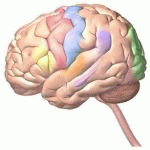Neurology
|
5 september 2015 04:03:27 |
| Alterations in serum microRNA in humans with alcohol use disorders impact cell proliferation and cell death pathways and predict structural and functional changes in brain (BMC Neuroscience) |
|
Tweet Background:
There is currently a lack of reliable, minimally invasive biomarkers that could predict the extent of alcoholism-induced CNS damage. Developing such biomarkers may prove useful in reducing the prevalence of alcohol use disorders (AUDs). Extracellular microRNAs (miRNAs) can be informative molecular indicators of changes in neuronal gene expression. In this study, we performed a global analysis of extracellular miRNAs to identify robust biomarkers of early CNS damage in humans diagnosed with DSM-IV AUDs. We recruited a relatively young set of 20 AUD subjects and 10 age-matched controls. They were subjected to comprehensive medical, neuropsychological and neuroimaging tests, followed by comparison of miRNA levels found in peripheral blood serum. Employing a conservative strategy to identify candidate biomarkers, miRNAs were quantified using two independent high-throughput methods: microarray and next-generation RNA-sequencing. This improved our capacity to discover and validate relevant miRNAs.
Results:
Our results identified several miRNAs with significant and reproducible expression changes in AUD subjects versus controls. Moreover, several significant associations between candidate miRNA biomarkers and various medical, neuropsychological and neuroimaging parameters were identified using Pearson correlation and unbiased hierarchical clustering analyses. Some of the top candidate biomarkers identified, such as mir-92b and mir-96 have established roles in neural development. Cross-species validation of miRNA expression was performed using two different in vivo rat drinking models and two different in vitro mouse neural stem cell exposure models. A systems level analysis revealed a remarkable degree of convergence in the top changes seen in all of these data sets, specifically identifying cell death, cell proliferation and cell cycle processes as most consistently affected. Though not necessarily the same molecules, the affected miRNAs within these pathways clearly influence common genes, such as p53 and TNF, which stand out as potential keystone molecules. Lastly, we also examined the potential tissue origins of these biomarkers by quantifying their levels in 15 different tissue types and show that several are highly-enriched in the brain.
Conclusions:
Collectively, our results suggest that serum miRNA expression changes can directly relate to alterations in CNS structure and function, and may do so through effects on highly specific cellular pathways. |
| 188 viewsCategory: Neurology |
 Singapore Tele-technology Aided Rehabilitation in Stroke (STARS) trial: protocol of a randomized clinical trial on tele-rehabilitation for stroke patients (BMC Neurology) Singapore Tele-technology Aided Rehabilitation in Stroke (STARS) trial: protocol of a randomized clinical trial on tele-rehabilitation for stroke patients (BMC Neurology)Test–retest reliability of KINARM robot sensorimotor and cognitive assessment: in pediatric ice hockey players (Journal of NeuroEngineering and Rehabilitation) 
|
| blog comments powered by Disqus |
MyJournals.org
The latest issues of all your favorite science journals on one page
The latest issues of all your favorite science journals on one page



